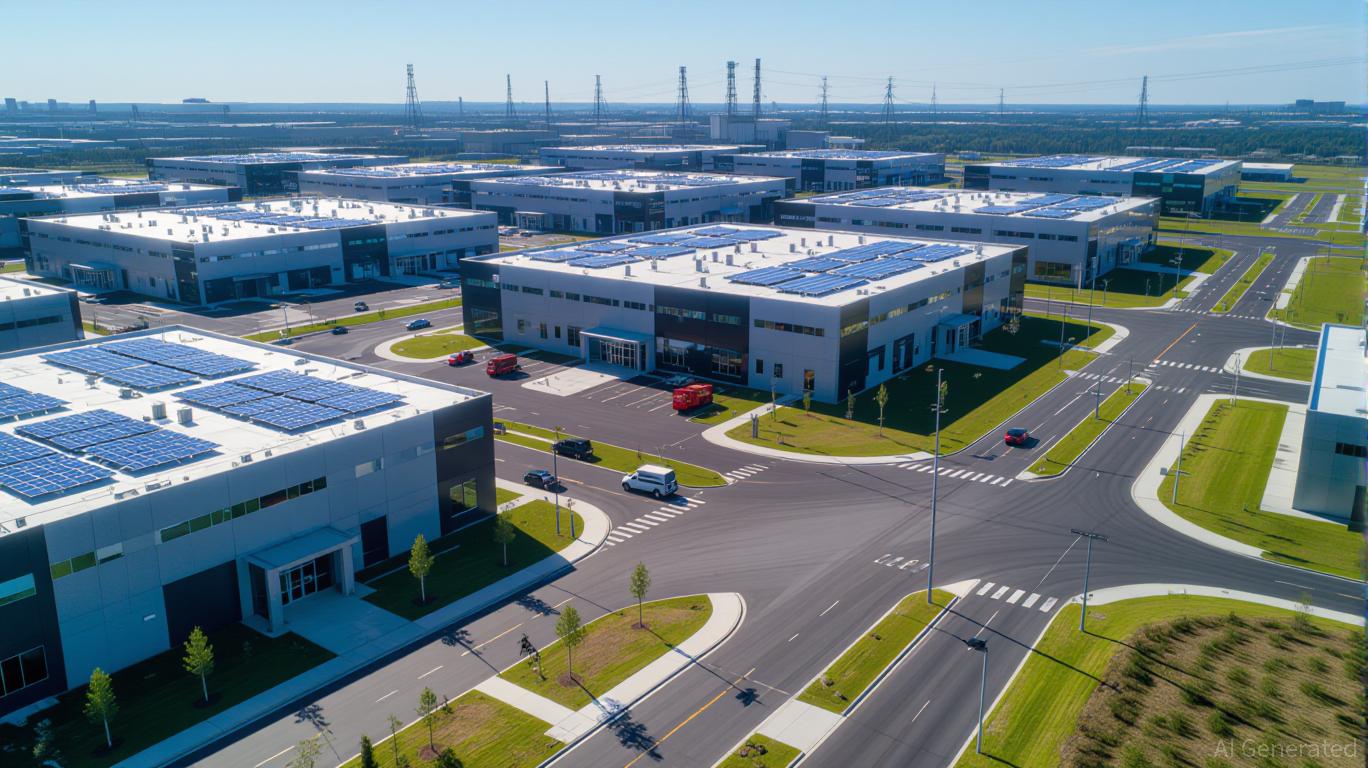The ZK Protocol Boom: Unveiling the Driving Force Behind the Latest Surge
- ZK Protocol's 2025 market surge reflects $28B TVL and 43,000 TPS scalability, driven by zero-knowledge proofs (ZKPs) addressing blockchain's scalability-privacy tradeoff. - Institutional adoption by Goldman Sachs and Deutsche Bank highlights ZK's role in compliance frameworks, with StarkNet's 200% Q4 TVL growth and 70% gas fee reductions. - Regulatory alignment emerges as key strength, with ZK-based solutions enabling EU DSA compliance and CISA-mandated data integrity through cryptographic verification t
Blockchain Infrastructure: The Backbone of ZK’s Strength
The ascent of ZK Protocol is largely due to its solutions for two major blockchain challenges: scaling and privacy. ZK-driven technologies like

These technical strides have also translated into practical use cases.
Regulatory Resilience: ZK as a Compliance Solution
By 2025, regulatory bodies have placed greater emphasis on openness and responsibility, especially to fight misinformation and protect data authenticity.
In the US,
Institutional Adoption: Turning Theory into Reality
The move by institutions to adopt ZK Protocol is already underway. Sony’s collaboration with ZKsync, for instance, demonstrates the protocol’s value in sectors like media and entertainment, where secure and verifiable transactions are essential. At the same time,
Additionally, ZK Protocol is being woven into AI and Web3 governance models. Agentic AI marketplaces are using ZKPs to confirm the ethical origins of AI models without disclosing proprietary details. In healthcare, initiatives like
Strategic Role in the Crypto Landscape
The momentum behind ZK Protocol is not a short-lived phenomenon but a result of its strategic placement at the crossroads of blockchain progress and regulatory needs. As organizations face the dual hurdles of scaling and compliance, ZK Protocol stands out as a comprehensive answer. Its capacity to counter misinformation through cryptographic validation—whether in AI content or financial operations—makes it a vital building block for a transparent yet decentralized digital future.
For those investing in the sector, the message is unmistakable: ZK Protocol represents more than just a technological improvement; it signals a fundamental shift. As the crypto industry evolves, solutions that successfully balance innovation with regulatory demands will take the lead. The recent upswing in ZK Protocol’s market performance underscores its preparedness for this pivotal role.
Disclaimer: The content of this article solely reflects the author's opinion and does not represent the platform in any capacity. This article is not intended to serve as a reference for making investment decisions.
You may also like
Ethereum News Update: Ethereum Holds at $2,900 Amid ETF Purchases, Federal Reserve Ambiguity, and Liquidation Threats
- Ethereum (ETH) stabilized near $2,900 on Nov 25, 2025, amid anticipation of a potential Fed rate cut and conflicting on-chain/technical signals. - ETF inflows ($96.67M on Nov 24) and whale accumulation (3.63M ETH held) signaled growing confidence in altcoins despite Bitcoin's 58% dominance. - Technical indicators showed mixed momentum: MACD bullish but RSI neutral, with $3,132 EMA as a critical breakout threshold for further gains. - Risks persisted from October liquidations, treasury NAV adjustments, an
Ethereum News Today: Ethereum Holds Steady at $3,000 as Institutional Interest and the Conclusion of QT Indicate a Market Rebound
- Ethereum (ETH) has rebounded above $3,000, signaling market stabilization amid easing bearish sentiment driven by institutional demand, ETF inflows, and the Fed's ending QT cycle. - Analysts highlight 26-month high ETH demand metrics (90,995 ETH on Nov 26) and three-day ETF inflows ($230.9M) as technical and institutional confidence indicators. - The Fed's Dec 1 QT pause and dovish signals from John Williams, plus BlackRock's staked ETH ETF filing, reinforce crypto-friendly monetary policy expectations.

The transformation of the Xerox campus in Webster, NY: Driving Expansion in Industrial Real Estate and Infrastructure
- Webster’s Xerox Campus redevelopment transforms a 300-acre brownfield into a high-growth industrial hub by 2025 via $9.8M FAST NY grants and state funding. - Infrastructure upgrades (roads, sewer, power) position the site to compete with Sun Belt markets, attracting projects like a $650M dairy plant creating 250 jobs. - Low 2% industrial vacancy rates in Western NY and strategic proximity to Buffalo’s port highlight the region’s appeal for advanced manufacturing and logistics. - State-backed $283M Upstat

BTC breaks through $88,000